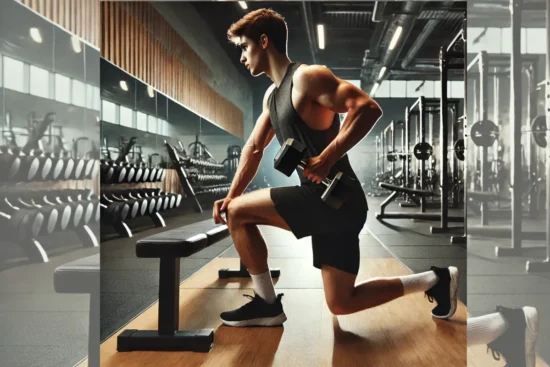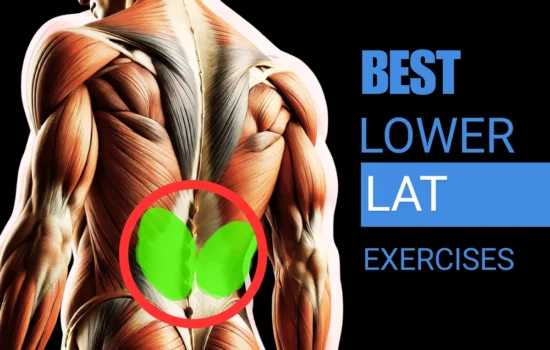Table of Contents
Note: Article is reviewed by our Fitness Expert Andrew Tait
When it comes to building a well-rounded physique, a strong back is a game changer. Of course, for aesthetics, it’s awesome. But a powerful back can also improve body posture, support everyday movements, and elevate strength training. At the heart of a great back lies the Latissimus dorsi, or “lats.” These muscles are key to achieving that desirable V-shaped look that we all wanted. But before that let’s learn about why we should focus our Lat in the first place.
Why Focus on Lat Exercises?
The lats are the largest muscles in the upper body, covering a significant portion of your back. Building these muscles can lead to a more defined, tapered appearance, making your waist look smaller and enhancing your overall frame. Plus, strengthening the lats can support better posture and overall stability during other workouts.
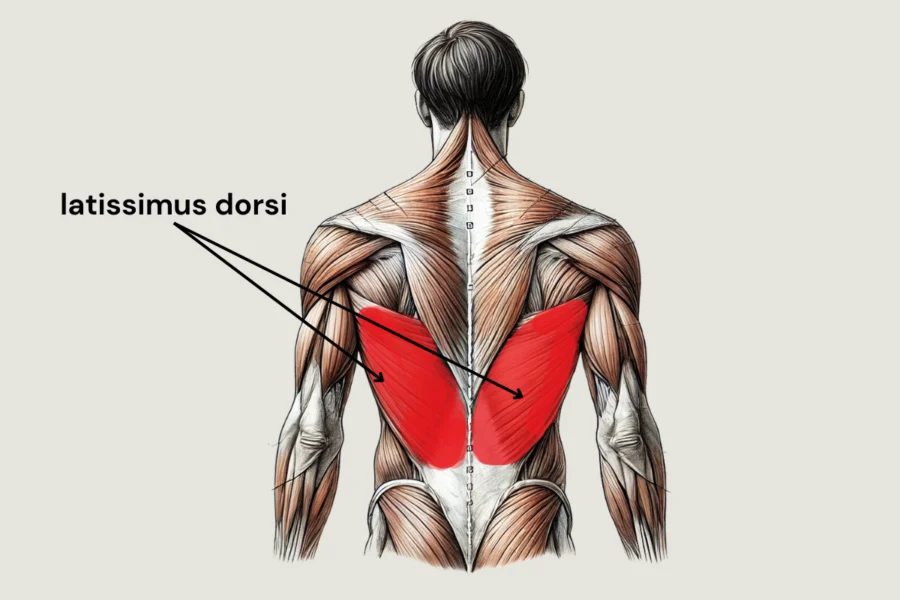
Why Lat workouts are Important?
1. Building Strength and Functionality
Lat workouts are often overlooked, but they play a vital role in building strength and improving overall functionality. When you focus on your lats, you’re not just adding muscle; you’re setting the stage for a stronger body. Well-developed lats can enhance your performance in key lifts like Pull-Ups and Deadlifts, giving you a solid base for your strength training.
2. Everyday Benefits
In daily life, strong lats make a big difference. They help with pulling, lifting, and maintaining good posture, making it easier to handle everyday tasks. Plus, as you strengthen these muscles, your core stability gets a boost, which improves your balance and overall athleticism.
3. Aesthetic Appeal
Let’s also talk about how strong lats look. A well-defined back creates that attractive V-taper, which can make you feel more confident in your own skin. Focusing on your lats not only enhances your physical performance but also contributes to your overall well-being.
Here’s 8 Best Lat Exercises
1. Wide Pull Ups (a.ka. Wide Grip Pull Ups)
Wide Pull-Ups are a classic compound exercise, tried-and-true exercise that has stood the test of time. You don’t need fancy gym equipment just a pull-up bar and some determination! This exercise directly targets your lats and helps you build that sought-after V-shape. Wide Pullups also called Wide Grip Pullups if you didn’t know.

How to Do Wide Pull-Ups:
- Find a sturdy pull-up bar that can safely hold your weight.
- Grip the bar with your hands slightly wider than shoulder-width.
- Hang with your arms fully extended, engage your core, and stabilize your body.
- Pull yourself up by driving your elbows down toward your sides, focusing on engaging your back muscles.
- Aim to get your chin above the bar. Don’t worry if you can’t at first—progress takes time.
- Lower yourself slowly and repeat for as many clean reps as you can.
Muscles Worked:
Wide Pull-Ups primarily target the lats, but they also work your trapezius, rhomboids, and even your core muscles for stability.
Check out the Video:
2. Lat Pull Down (Using Pull Down Machine)

The Lat Pulldown is a versatile exercise that’s perfect if you’re looking for a controlled movement that engages the lats. It’s like a reverse pull-up, allowing you to focus on muscle contraction.
How to Perform a Lat Pulldown:
- Adjust the pulldown machine to a wide grip setting.
- Sit down, securing your thighs under the knee pad for stability.
- Pull the bar down toward your chest, leading with your elbows and engaging your lats.
- Slowly release the bar back up, ensuring your muscles stay under tension.
- Repeat for your desired number of reps.
Muscles Worked:
While the primary focus is on the latissimus dorsi, this exercise also hits the rhomboids, rear deltoids, and biceps, contributing to overall back development.
Check out the Video:
3. Bend Over Barbell Rows
Bent-Over Barbell Rows are a staple in many back workouts because of their ability to target multiple muscles at once. They not only hit your lats but also strengthen your posture and core stability.

Bend Over Barbell Row is another great compound exercise that focuses on your lats as well as your posture. As the name suggests, you need a barbell row to perform the Bend Over Barbell Row exercise.
How to Do Bent-Over Barbell Rows:
- Stand with your feet shoulder-width apart and grip a barbell with an overhand grip.
- Bend at your hips, keeping your back straight, until your torso is nearly parallel to the floor.
- Pull the barbell towards your lower chest, squeezing your shoulder blades together.
- Lower the barbell back down with control, maintaining good posture.
- Repeat for your desired number of reps.
Muscles Worked:
This move targets the lats, rhomboids, trapezius, and even your lower back. It’s a full-range motion that challenges your strength and stability.
Check out the Video:
4. Single Arm Dumbbell Row
The Single-Arm Dumbbell Row is a great exercise for isolating each side of your back, ensuring balanced strength. It’s particularly effective at targeting the lats, giving you a more even muscle development.

Dumbbell Row is a compound exercise that primarily targets Latissimus dorsi or lats along with biceps and shoulders. But the main advantage that comes with Single Arm Dumbbell Row is the better isolation on both lats, making it equally stronger.
How to Perform a Single-Arm Dumbbell Row:
- Place one knee and the same-side hand on a flat bench for support.
- Hold a dumbbell in your free hand, letting it hang straight down.
- Pull the dumbbell towards your hip, keeping your elbow close to your body.
- Lower the weight slowly, maintaining control.
- Switch sides after completing your reps.
Muscles Worked:
The focus here is on the lats, but you’ll also engage the rhomboids, trapezius, rear deltoids, and even your core as you stabilize yourself.
Check out the Video:
5. Seated Cable Rows
Seated cable rows are an excellent exercise to engage the lats while also working on the middle back, traps, and rhomboids. This exercise allows for a full range of motion, which helps build thickness and definition in your back muscles. Plus, it’s easier on the lower back compared to other rowing variations, making it great for those dealing with lower back issues.

How to Perform Seated Cable Rows:
- Sit on the cable row machine with your feet firmly planted on the footrests.
- Grab the V-bar handle with both hands, keeping your back straight and chest out.
- Pull the handle towards your torso, squeezing your shoulder blades together at the end of the movement.
- Slowly return to the starting position with your arms fully extended.
Muscles Worked:
The focus here is on the lats, but you’ll also engage the rhomboids, trapezius, rear deltoids, and even your core as you stabilize yourself.
Check out the Video:
6. T-Bar Rows
T-Bar rows are a fantastic exercise for building a thicker, more powerful back. With the chest support of a T-bar row machine, you can focus on pulling with your lats without worrying too much about maintaining balance, allowing for heavier loads. It’s one of those exercises that will leave you feeling that satisfying burn in your back.

How to Do T-Bar Rows:
- Position yourself on a T-bar row machine with your feet shoulder-width apart.
- Grab the handle with both hands and lift the bar slightly off the ground.
- Pull the bar towards your chest, keeping your elbows close to your body and squeezing your back muscles.
- Slowly lower the bar back to the starting position, maintaining control.
Muscles Worked:
The lats take center stage here, but the movement also involves the traps, rhomboids, rear deltoids, and your biceps for an overall balanced back workout.
7. Chin-Ups
Chin-ups may seem simple, but don’t underestimate their effectiveness in building a strong back. Unlike wide pull-ups, chin-ups involve a closer grip and an underhand grip, which targets the lower lats and also engages the biceps more. They’re a must-have in any back workout routine if you want to maximize lat activation and overall upper-body strength.
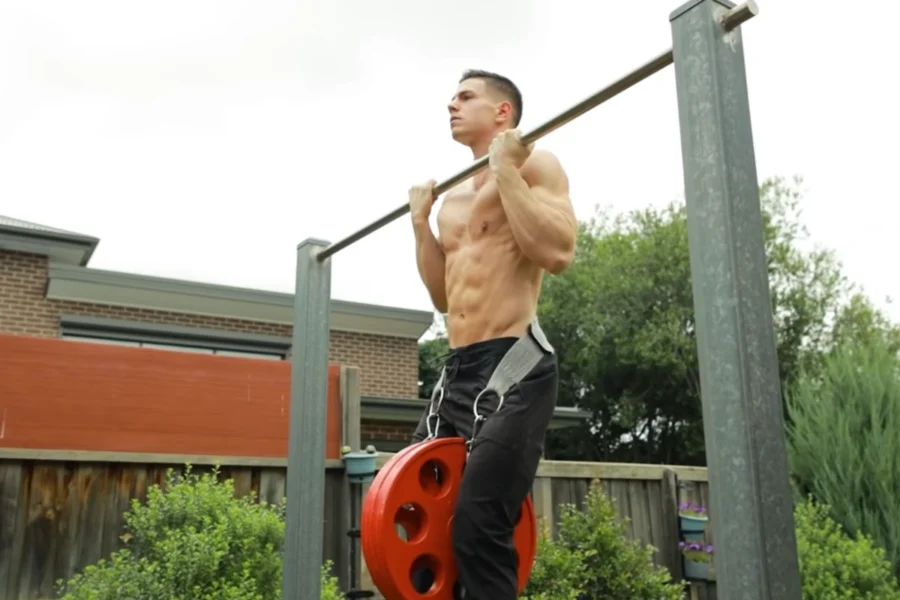
How to Do Chin-Ups:
- Grab a pull-up bar with an underhand grip, hands slightly closer than shoulder-width apart.
- Hang with your arms fully extended, then pull yourself up until your chin is above the bar.
- Slowly lower yourself back down, maintaining control throughout the movement.
Muscles Worked:
While the lats are the main focus, this exercise also works your biceps, forearms, and upper back, making it a great compound movement for overall upper-body strength.
8. Straight Arm Lat Pulldown
The straight arm lat pulldown isolates the lats effectively and helps build that wide, V-tapered back that many aspire to achieve. It’s a great finishing exercise to burn out your lats and improve mind-muscle connection.
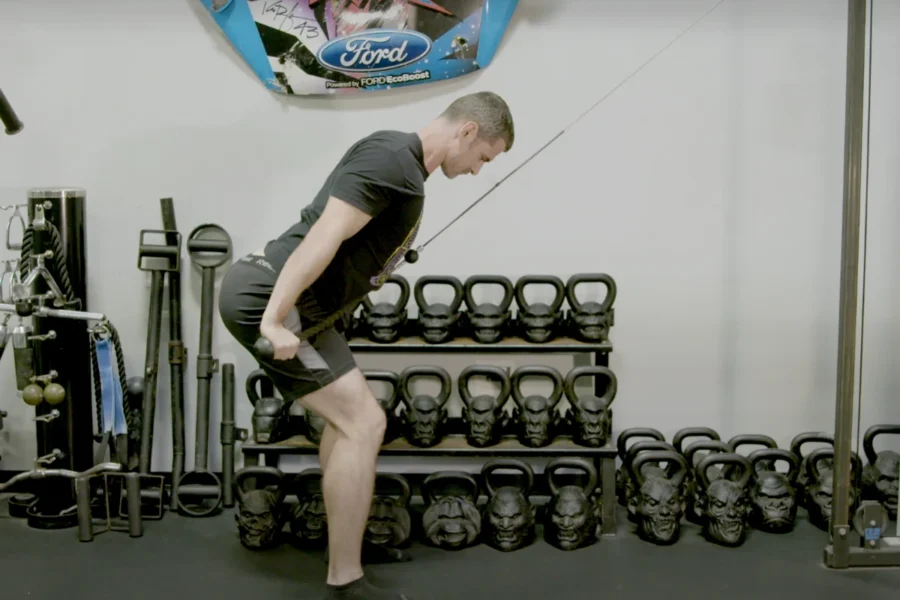
How to Perform Straight Arm Lat Pulldown:
- Attach a straight bar to the high pulley of a cable machine and grab it with both hands.
- Stand with your feet shoulder-width apart and slightly bend your knees.
- Keeping your arms straight, pull the bar down towards your thighs while maintaining a slight bend in your elbows.
- Squeeze your lats at the bottom of the movement and slowly return to the starting position.
Muscles Worked:
The focus here is again on the lats, but you’ll feel engagement in your teres major and core stabilizers as you maintain control throughout the movement.
Wrapping Up: Building a Stronger, Wider Back
Focusing on these eight lat exercises will set you on the path to a stronger, wider back that looks great from every angle. Remember, consistency is key—don’t expect overnight results. Keep challenging yourself by progressively increasing the weights or reps, and don’t forget to listen to your body.
Lat workouts can be tough, but the sense of achievement you’ll feel when you see your back muscles popping out is worth every rep.
Hope you liked this article. Also don’t forget to checkout Fitness for more such content
Check related articles





